Are you facing the difficult decision of terminating an academic contract? It's a situation many educators encounter, and knowing how to communicate your intentions can make all the difference. In this article, we'll guide you through crafting a professional and respectful letter that outlines the reasons for termination while maintaining a positive tone. Ready to get started? Let's dive into the details!
Clear Subject Line
Termination of Academic Contract: [Your Name] - [Contract ID or Reference Number] This letter addresses the formal termination of an academic contract between [Your Name] and [Institution Name, e.g., Harvard University]. The contract, established on [Start Date], outlined responsibilities including [specific responsibilities, e.g., teaching, research]. Circumstances necessitating termination involve [specific reasons, e.g., personal reasons, changes in career focus]. The effective termination date will be [Effective Date]. A formal transition plan will be prepared to ensure a smooth handover of responsibilities. Acknowledgment of receipt and acceptance of this termination notice is appreciated.
Detailed Reason for Termination
Termination of an academic contract can occur for various reasons, including performance issues, misconduct, or program changes. Performance issues refer to consistent failure to meet academic standards set by the institution, which may include poor evaluations or incomplete research responsibilities. Misconduct encompasses behaviors that violate academic ethics, such as plagiarism or inappropriate interactions with students. Program changes can arise from administrative decisions, budget constraints, or shifts in academic focus that render a position redundant. It's crucial to document specific incidents, dates, and evidence that substantiate the termination reason, ensuring alignment with institutional policies and procedures surrounding contract termination.
Reference to Contract Clauses
The termination of an academic contract can occur due to various circumstances such as breach of terms, poor performance, or mutual agreement. For instance, Clause 5.2 of the agreement outlines the conditions under which either party may terminate the contract prematurely. This includes failure to complete required deliverables or failure to meet established academic standards. Similarly, Clause 7.1 details the process for voluntary termination, requiring a written notice of at least 30 days. Grounds for termination under Clause 6 might include significant misconduct or ethical violations, which can be clearly defined per the institution's policies. Adhering to these clauses ensures a structured approach to the termination process, safeguarding the interests of both parties involved.
Requested Action or Next Steps
A formal request for action regarding academic contract termination requires clear communication of the circumstances and the desired outcome. The involved parties, such as the institution, department, or faculty member, must clearly understand the reasons for termination--these can include performance issues, funding changes, or mutual agreement. Detailing the next steps is crucial, including the timeline for finalizing the termination, arrangements for returning university property (such as research materials or equipment), and clarification on final payments or benefits. Additionally, outlining any procedures for addressing disputes or grievances in accordance with institutional policy enhances transparency and ensures compliance with academic regulations.
Official Closing and Contact Information
The academic contract termination process requires clear communication and adherence to formal protocols. Official closing statements should reflect professionalism while providing necessary information regarding the termination. Contact information is essential for any follow-up discussions or clarifications. Including details such as the name of the institution, department, and specific individuals involved can provide clarity. If applicable, mention the contract's beginning and termination dates, as well as any relevant performance metrics or incidents leading to the decision. Proper documentation ensures compliance with institutional policies and maintains professional relationships.
Letter Template For Academic Contract Termination Samples
Letter template of academic contract termination for unsatisfactory performance.
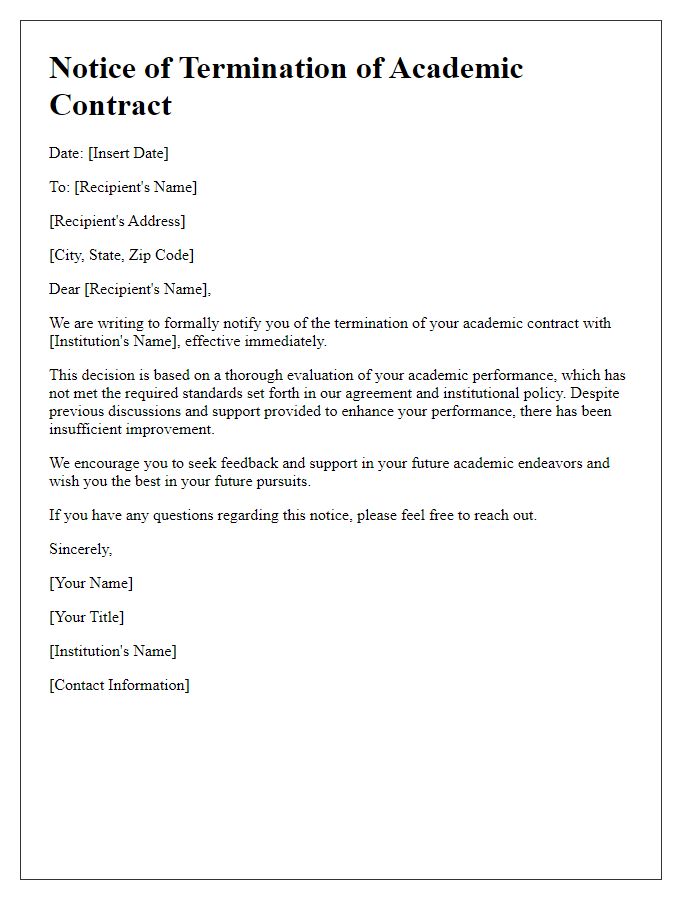
Letter template of academic contract termination in case of policy violations.
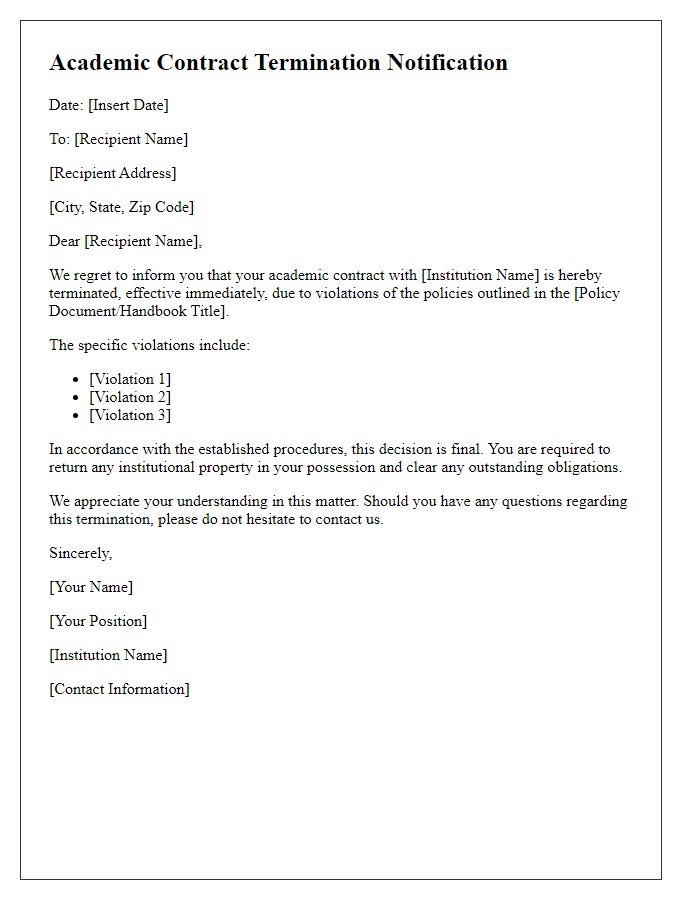
Letter template of academic contract termination for program discontinuation.
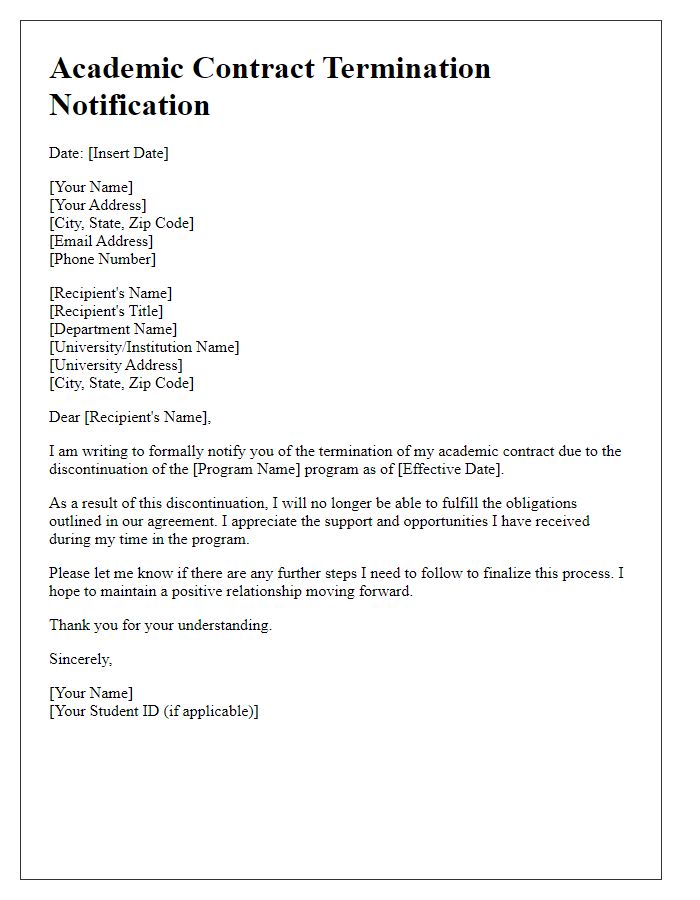
Letter template of academic contract termination following a mutual agreement.
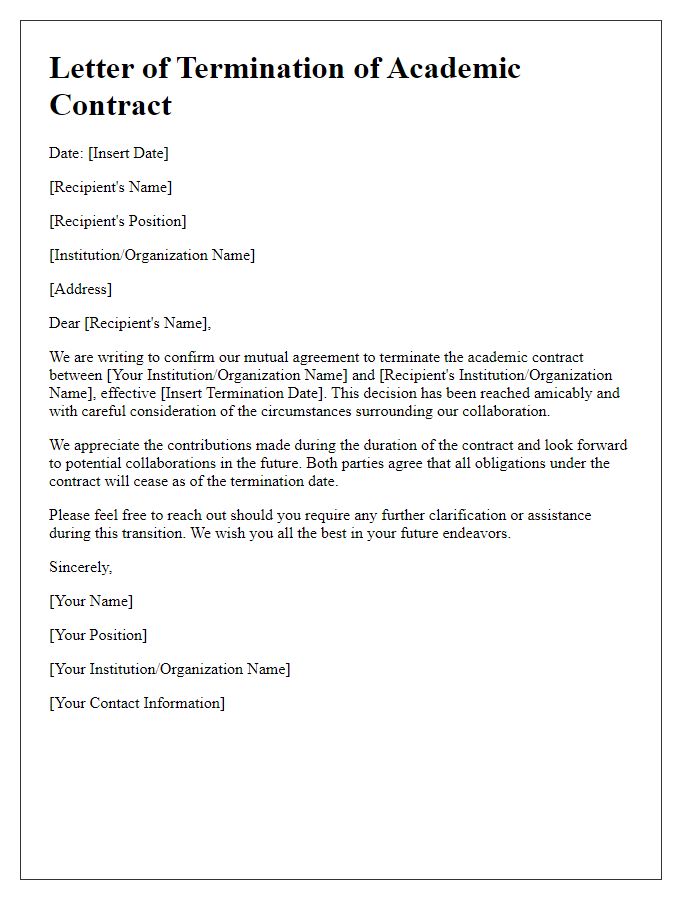

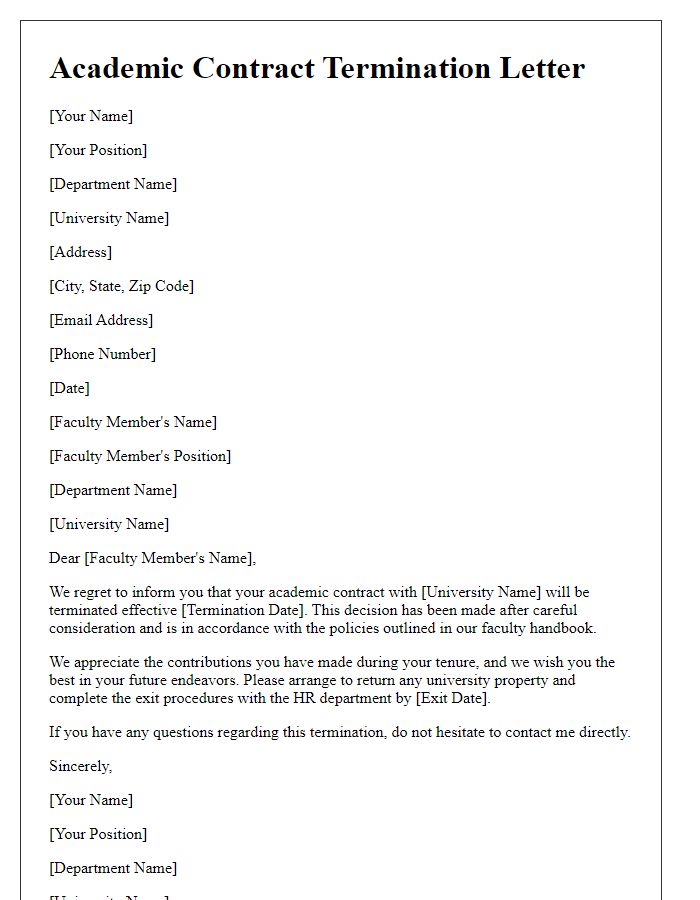
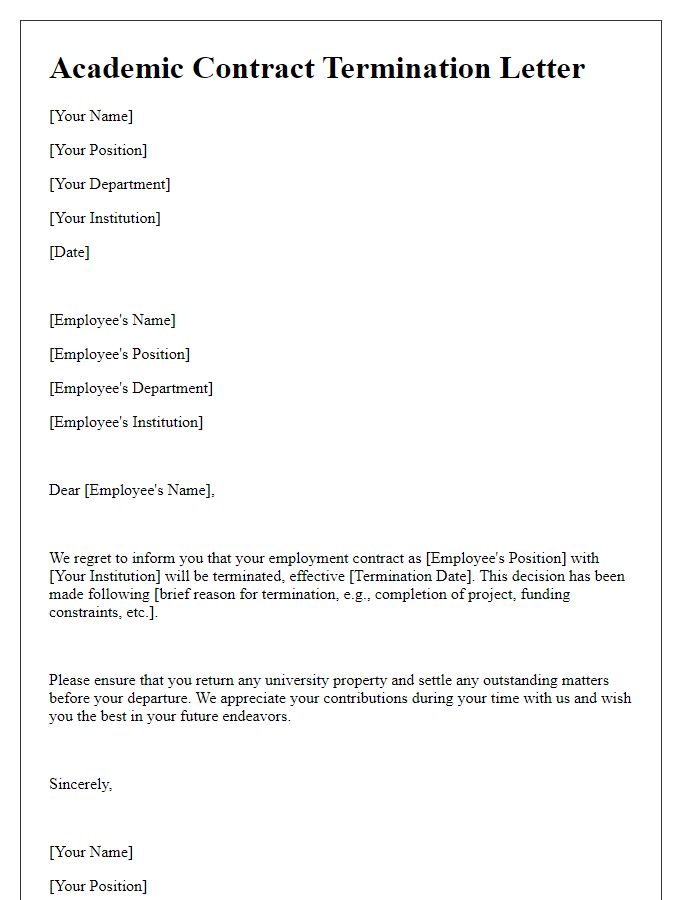
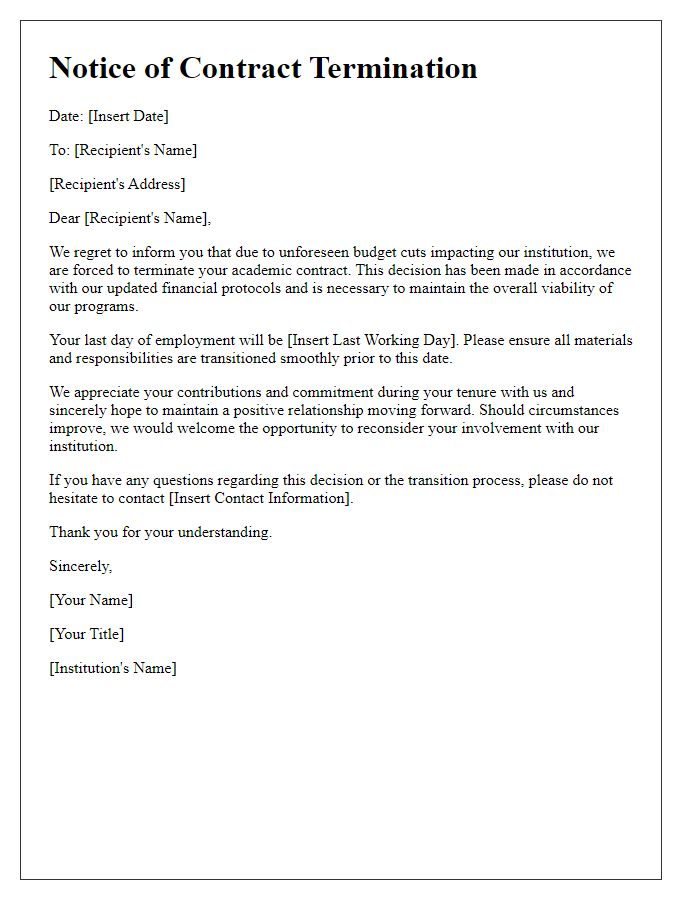
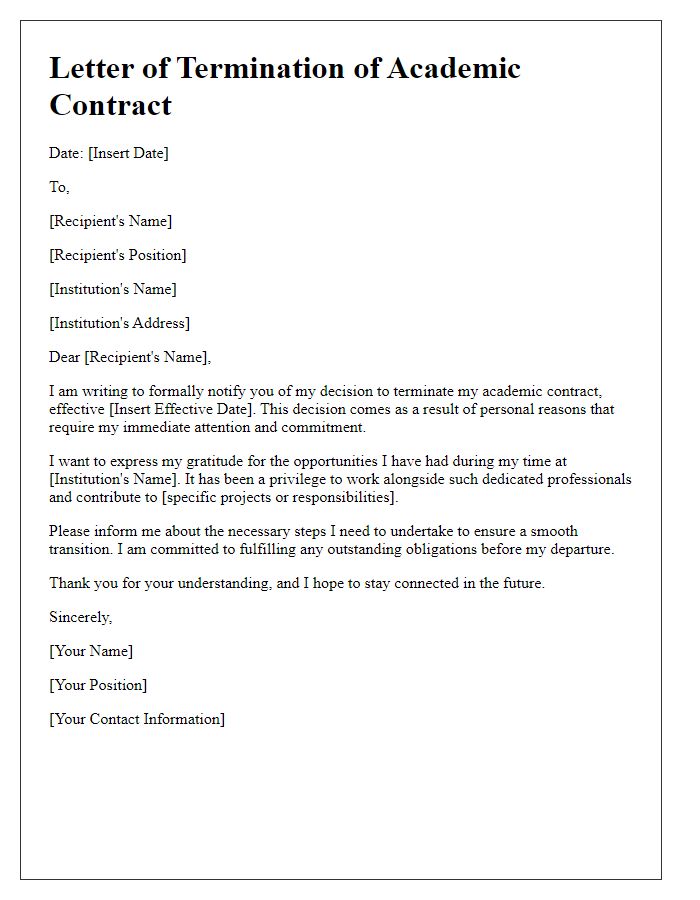



Comments